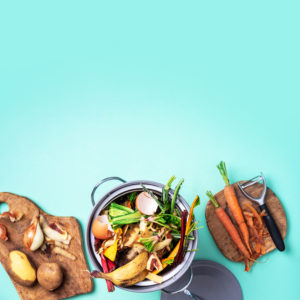
An estimated 30% of the global food supply is thrown away annually. Not only is this wasteful, it’s neither sustainable nor good for the environment. As a result, many food and beverage stakeholders are taking steps to support a more sustainable and less wasteful food supply.
This means you may have begun to see phrases like “upcycled foods” more when reading online or while shopping at grocery stores. But what does “upcycled” mean? According to the Upcycled Food Association (UFA), “upcycled food is about reducing food waste by creating high quality, nutritious food products out of the nutrients that slip through the cracks of our food system.”
Taking it a step further, the Upcycled Foods Definition Task Force published a summary paper in the Spring of 2020 further defining the phrase:
“Upcycled foods use ingredients that otherwise would not have gone to human consumption, are procured and produced using verifiable supply chains and have a positive impact on the environment.”
Upcycled Foods Definition Task Force
This means that upcycled foods are:
- Made from by-products or ingredients that would have otherwise gone to waste.
- Value-added products.
- Safe for human consumption, but can also be used in animal feed, pet food, and cosmetics.
- Have an auditable supply chain that ensures they are truly helping to reduce waste without putting added stress on the environment.
How does this apply to food additives?
Believe it or not, some additives that are commonly found in food and beverages are already upcycled ingredients. Take pectin for instance. The main sources of pectins are the rinds of citrus fruit, apple pomace (the main by-product of the apple juice industry) and sugar beet pulp. These otherwise wasted food processing components are used to help improve the texture of jams and jellies.
Another example is glycerol ester of wood rosin (GEWR). GEWR is harvested from the stumps of pine trees cut down for other uses such as papermaking or as building lumber. GEWR is used as a stabilizer in fruit-based beverages and chewing gum.
A couple other examples include lecithin (often sourced as a by-product of vegetable oil production) and yeast extract (which can be produced using the by-products of corn, sugar beet and sugar cane used to make molasses).
How do I know if the food I’m buying is upcycled?
Foods that are upcycled will indicate so on their packaging. One way they may do so is using a new certification standard and label established by the UFA. The first iteration of this standard sets a framework for the certification of upcycled ingredients and products.
Ultimately, by upcycling by-products that would have otherwise been thrown away, food & beverage manufacturers are aiding the environment by decreasing waste and creating a more sustainable food supply.
